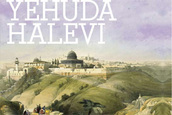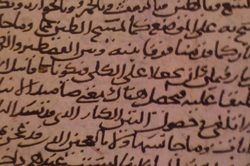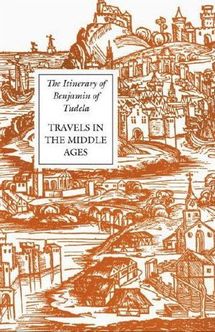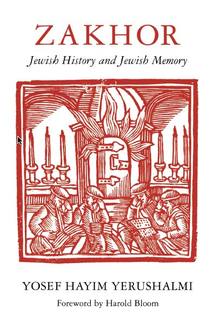
Luminous. Beautiful. Precious. Luxurious. These adjectives are evoked by the term “Golden Age,” used by Jewish historians use to refer to Spain in the medieval era. The period is remembered as a time when Jews were at ease with their non-Jewish neighbors, when they could breathe easily, express themselves freely, and walk proudly.
This chapter in history has long provided a message of hope. Jewish intellectuals in 19th-century Europe lamented their own frustrating attempts to be accepted into the non-Jewish world. But, they looked to medieval Spain as a promise of what they might achieve if only their gentile neighbors embraced them. More recently, in the wake 9/11, the Golden Age of Spain has provided an example of how warfare and hatred between religious communities might be replaced by tolerance and good-will.
Hillel Halkin has little patience for this narrative. His book Yehuda Halevi (2010) is a biography of one of the most prominent Jewish cultural figures of Medieval Spain. More broadly, the work provides a portrait of the period during which Halevi lived. Not doubt it was a time when Jews produced literary and intellectual masterpieces. It was also a time when cultural ideas and forms flowed freely between Spain’s Muslim, Christian and Jewish populations. Yet, these conditions did not mean that Jews lived with a sense of security. They were hardly “golden.”
Yehuda HaLevi provides a wonderful subject for a biography because of his tremendous creative output and his great diversity of talent. He was a doctor, a community leader, a philosopher, a poet and a lively character. During many of his years, he lived the high-life – surrounded by friends, drinking wine, entertained by music amidst luscious gardens, where cool fountains flowed and soft breezes carried the scent of almond blossoms.
But these experiences were set against a dark backdrop. If Yehuda Halevi is a mascot of cultural and intellectual achievement, he is also an icon of the wandering Jew, moving from one place to the next, with the trials of persecution always on his trail.
Born in northern Spain (around 1070) he moved to Granada as a young man to join the city’s lively Jewish intellectual scene. Paradoxically, this city – a center of Jewish life – was living under the shadow of destruction. An estimated three thousand Jews were killed in a popular uprising just a decade before Halevi’s arrival.
If a sense of tranquility had returned to Granda, it was not long before it was shattered. In 1090, just a few years after Halevi arrived, the zealous Almoravid’s invasion whipped up anti-Jewish sentiment once again. Halevi fled, along with many of his fellows. He travelled to Lucena, picked up again for Seville and then again for Toledo. There he settled, but not for long. In 1109, a war of royal succession brought with it terror and destruction to the city’s Jewish community.
At this point in the historical narrative, Halkin comments that the loss of Jewish life and property in Toledo was yet “another reminder of how precarious….the Jewish situation in the Iberian peninsula was” (70-71). On the surface a spirit of convivencia (co-existence) reigned. But this disposition was no more than a fragile veneer; a mood that could be shattered at any moment.
After leaving Toledo, Yehuda Halevi moved to Cordoba. As he contemplated establishing himself in a new city yet again, it should come as no surprise that he simply gave up. Tired, weary, lost and nearing old age, Halevi lost hope of ever having a good life Spain.
He announces that he will move to Jerusalem. For Maria Menocol (who wrote Ornament of the World, 2002) Yehuda HaLevi’s declaration of leaving was akin to a defection. It was a denouncement and abandonment of the very culture “that made his poetry possible.” For Hillel Halkin, by contrast, Yehuda Halevi’s greatness lies in this very act of bravery.
In Halkin’s words, Halevi’s voyage to the Holy Land was one “of no return to a country where nothing awaited him but danger, loneliness, and hardship” ; a plan so unlikely, his contemporaries must have thought him mad. “There would be no one to welcome or honor him,” Halkin tells us, “no Jewish community worthy of its name to take him in.” Then he asks, “What was he thinking of? What?” (p.128) This question is of course rhetorical, for Halkin provides his own answer:
For Halkin, Yehuda Halevi is a heroic figure because he had deep understanding of the Jewish condition. So too, he had an honest and pragmatic view of how thin Spain’s culture of tolerance really was. His leaving was an “expression of ultimate commitment” to a singular idea: that “All the best of grand Spain” was not worth even “one glimpse of Jerusalem’s dust.”
This chapter in history has long provided a message of hope. Jewish intellectuals in 19th-century Europe lamented their own frustrating attempts to be accepted into the non-Jewish world. But, they looked to medieval Spain as a promise of what they might achieve if only their gentile neighbors embraced them. More recently, in the wake 9/11, the Golden Age of Spain has provided an example of how warfare and hatred between religious communities might be replaced by tolerance and good-will.
Hillel Halkin has little patience for this narrative. His book Yehuda Halevi (2010) is a biography of one of the most prominent Jewish cultural figures of Medieval Spain. More broadly, the work provides a portrait of the period during which Halevi lived. Not doubt it was a time when Jews produced literary and intellectual masterpieces. It was also a time when cultural ideas and forms flowed freely between Spain’s Muslim, Christian and Jewish populations. Yet, these conditions did not mean that Jews lived with a sense of security. They were hardly “golden.”
Yehuda HaLevi provides a wonderful subject for a biography because of his tremendous creative output and his great diversity of talent. He was a doctor, a community leader, a philosopher, a poet and a lively character. During many of his years, he lived the high-life – surrounded by friends, drinking wine, entertained by music amidst luscious gardens, where cool fountains flowed and soft breezes carried the scent of almond blossoms.
But these experiences were set against a dark backdrop. If Yehuda Halevi is a mascot of cultural and intellectual achievement, he is also an icon of the wandering Jew, moving from one place to the next, with the trials of persecution always on his trail.
Born in northern Spain (around 1070) he moved to Granada as a young man to join the city’s lively Jewish intellectual scene. Paradoxically, this city – a center of Jewish life – was living under the shadow of destruction. An estimated three thousand Jews were killed in a popular uprising just a decade before Halevi’s arrival.
If a sense of tranquility had returned to Granda, it was not long before it was shattered. In 1090, just a few years after Halevi arrived, the zealous Almoravid’s invasion whipped up anti-Jewish sentiment once again. Halevi fled, along with many of his fellows. He travelled to Lucena, picked up again for Seville and then again for Toledo. There he settled, but not for long. In 1109, a war of royal succession brought with it terror and destruction to the city’s Jewish community.
At this point in the historical narrative, Halkin comments that the loss of Jewish life and property in Toledo was yet “another reminder of how precarious….the Jewish situation in the Iberian peninsula was” (70-71). On the surface a spirit of convivencia (co-existence) reigned. But this disposition was no more than a fragile veneer; a mood that could be shattered at any moment.
After leaving Toledo, Yehuda Halevi moved to Cordoba. As he contemplated establishing himself in a new city yet again, it should come as no surprise that he simply gave up. Tired, weary, lost and nearing old age, Halevi lost hope of ever having a good life Spain.
He announces that he will move to Jerusalem. For Maria Menocol (who wrote Ornament of the World, 2002) Yehuda HaLevi’s declaration of leaving was akin to a defection. It was a denouncement and abandonment of the very culture “that made his poetry possible.” For Hillel Halkin, by contrast, Yehuda Halevi’s greatness lies in this very act of bravery.
In Halkin’s words, Halevi’s voyage to the Holy Land was one “of no return to a country where nothing awaited him but danger, loneliness, and hardship” ; a plan so unlikely, his contemporaries must have thought him mad. “There would be no one to welcome or honor him,” Halkin tells us, “no Jewish community worthy of its name to take him in.” Then he asks, “What was he thinking of? What?” (p.128) This question is of course rhetorical, for Halkin provides his own answer:
For Halkin, Yehuda Halevi is a heroic figure because he had deep understanding of the Jewish condition. So too, he had an honest and pragmatic view of how thin Spain’s culture of tolerance really was. His leaving was an “expression of ultimate commitment” to a singular idea: that “All the best of grand Spain” was not worth even “one glimpse of Jerusalem’s dust.”



 RSS Feed
RSS Feed
